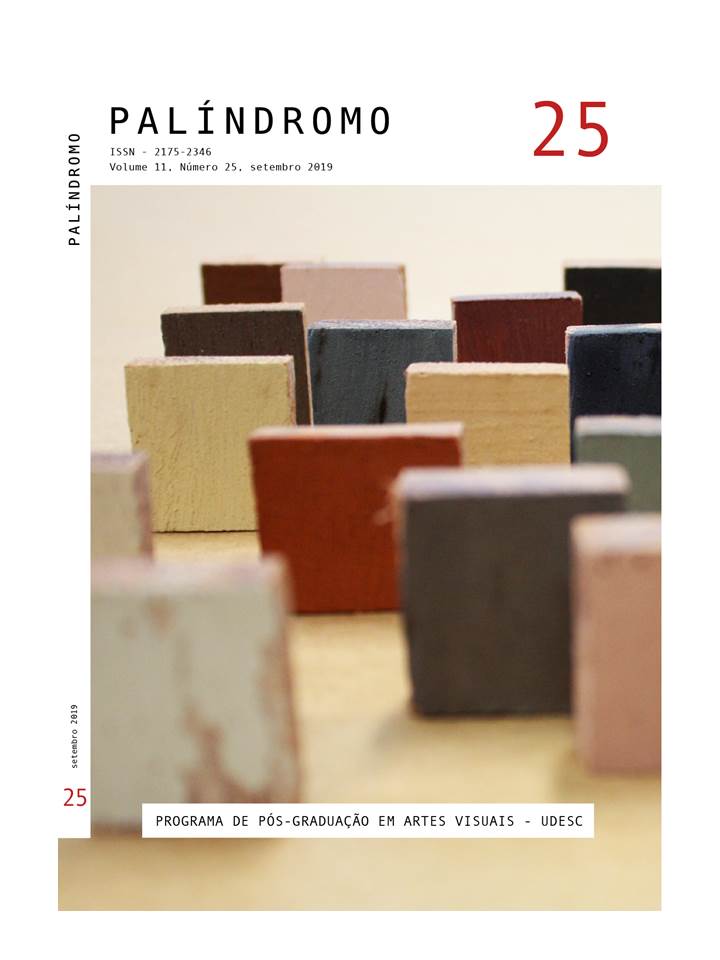MOVING ABSTRACTION: OPENING IN ALEXANDER CALDER’S MOBILES AND PIET MONDRIAN’S TRANSATLANTIC PAINTINGS
DOI:
https://doi.org/10.5965/2175234611252019131Keywords:
abstract painting, abstract sculpture, open workAbstract
The present essay intends to showcase a comparative relation between the work of two artists at the vanguard of abstract production: Piet Mondrian in painting and Alexander Calder in sculpture. In several studies on the development of Calder’s work, Mondrian’s role is restricted to the reception of the former in his studio, in 1930: when Calder came across the colorful rectangles and the absence of ornamentation, he suggested movement to all of that, which culminated in a series of abstract experiments that would quickly become his known Mobiles. The discrepancy between both of their artistic theories – on one hand Mondrian’s inflexibility in following the neoplastic propositions, and on the other Calder’s light fluency – are not enough to cancel the stylistic similarities of their artwork. Therefore, this research em-phasizes how their kinship goes beyond Calder’s awakening to non-figurative art, while it relies on Umberto Eco’s open work concept to showcase how their unusual genius, both Apollonian and Dionysian, potentiates their artwork.
Downloads
References
BRANDÃO, C. L. A Arte contra a natureza: filosofia, pintura e arquitetura em Mondrian. In: MONDRIAN, P. Neoplasticismo na pintura e na arquitetura. São Paulo: Cosac Naify, 2006, p. 7-23.
CALDER, A. À Propos of Measuring a Mobile. 1943. Disponível em: <http://calder.org/system/downloads/1943_A_Propos.P2903.pdf>. Acesso em: 30 mar. 2017.
______. Mobiles. In: EVANS, M. (ed.). The Painter’s Object. London: Gerold Howe, 1937, p. 62-67. Disponível em: <http://www.calder.org/life/system/downloads/1937_Mo-biles.P0301.pdf>. Acesso em: 30 mar. 2017.
CARANDENTE, G. Calder: mobiles and stabiles. New York: New American Library, 1968.
CHIPP, H. B.Teorias da arte moderna. São Paulo: Martins Fontes, 1996.
COOPER, H. Mondrian: The transatlantic paintings. New Haven: Yale University Press, 2001.
ECO, U. Obra aberta: forma e indeterminação nas poéticas contemporâneas. São Paulo: Perspectiva, 1976.
GULLAR, F.Etapas da arte contemporânea: do cubismo à arte neoconcreta. Rio de Janeiro: Editora Revan, 1999.
GULLAR, F. Calder e a alquimia do peso. In: SARAIVA, R. (org.). Calder no Brasil: crôni-ca de uma amizade. São Paulo: Cosac Naify, 2006, p. 225-228.
KRAUSS, R. The originality of the avant-garde and other modernist myths. London: MIT, 1999.
MILNER, J. Mondrian. New York: Abbeville, 1992.
MINDLIN, H. Alexander Calder. In: SARAIVA, R. (org.). Calder no Brasil: crônica de uma amizade. São Paulo: Cosac Naify, 2006, p. 54-58.
MONDRIAN, P. Neoplasticismo na pintura e na arquitetura. São Paulo: Cosac Naify, 2008.
PEDROSA, M. Tensão e coesão na obra de Calder. In: SARAIVA, R. (org.). Calder no Brasil: crônica de uma amizade. São Paulo: Cosac Naify, 2006, p. 124-135.
PLAZA, J. Arte e interatividade: autor-obra-recepção. ARS (São Paulo), São Paulo, v.1, n.2, dez. 2003. Disponível em: <http://dx.doi.org/10.1590/S1678-53202003000200002>. Acesso em: 25 nov. 2017.
SCHAPIRO, M. Mondrian: A dimensão humana na pintura abstrata. .São Paulo: Cosac Naify, 2001.
Downloads
Published
How to Cite
Issue
Section
License
Copyright (c) 2019 Palíndromo

This work is licensed under a Creative Commons Attribution 4.0 International License.
COPYRIGHT STATEMENT
The articles published by the magazine are free to use, intended for academic and non-commercial applications. Copyright is all assigned to the magazine. The articles whose authors are identified represent the expression from the point of view of their authors and not the official position of Palíndromo Magazine. The author (s) commits to whenever they publish material referring to the article published in Palíndromo mention this publication as follows:
This article was originally published by Palíndromo magazine in its volume (place the volume), number (place the number) in the year of (place the year) and can be accessed at: http://www.revistas.udesc.br/index.php/palindromo


